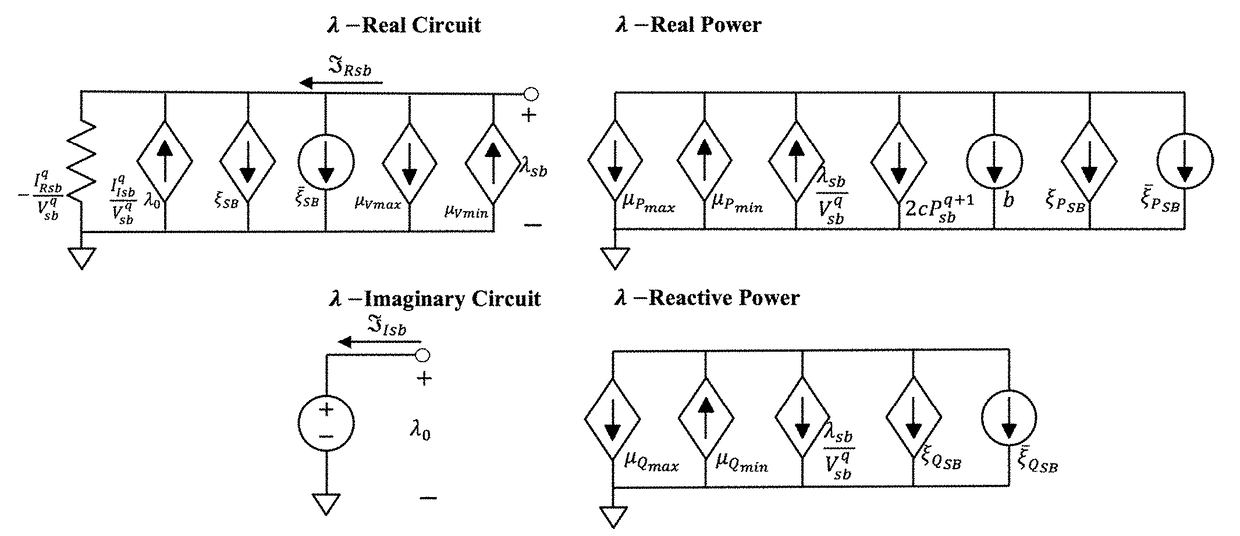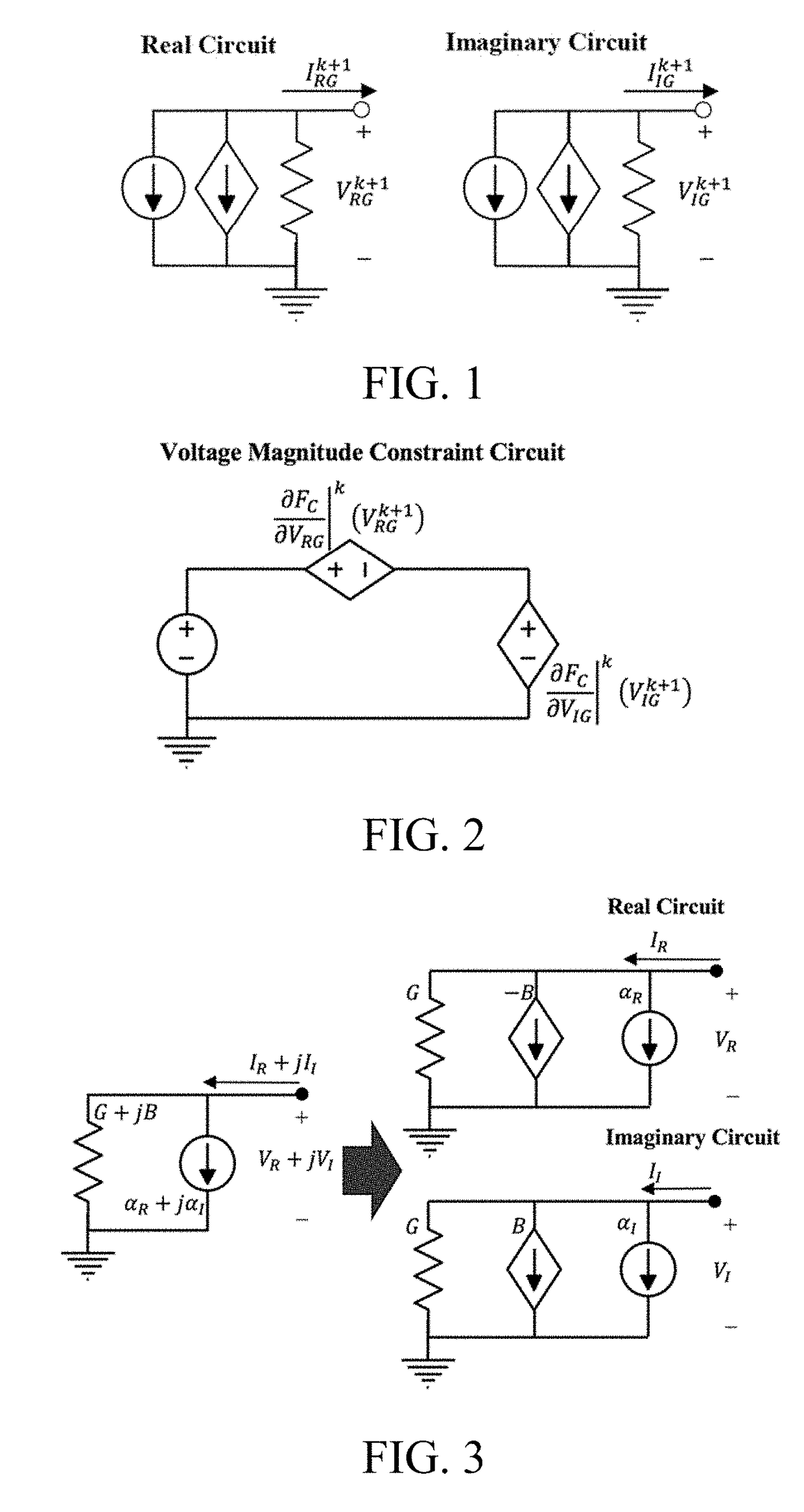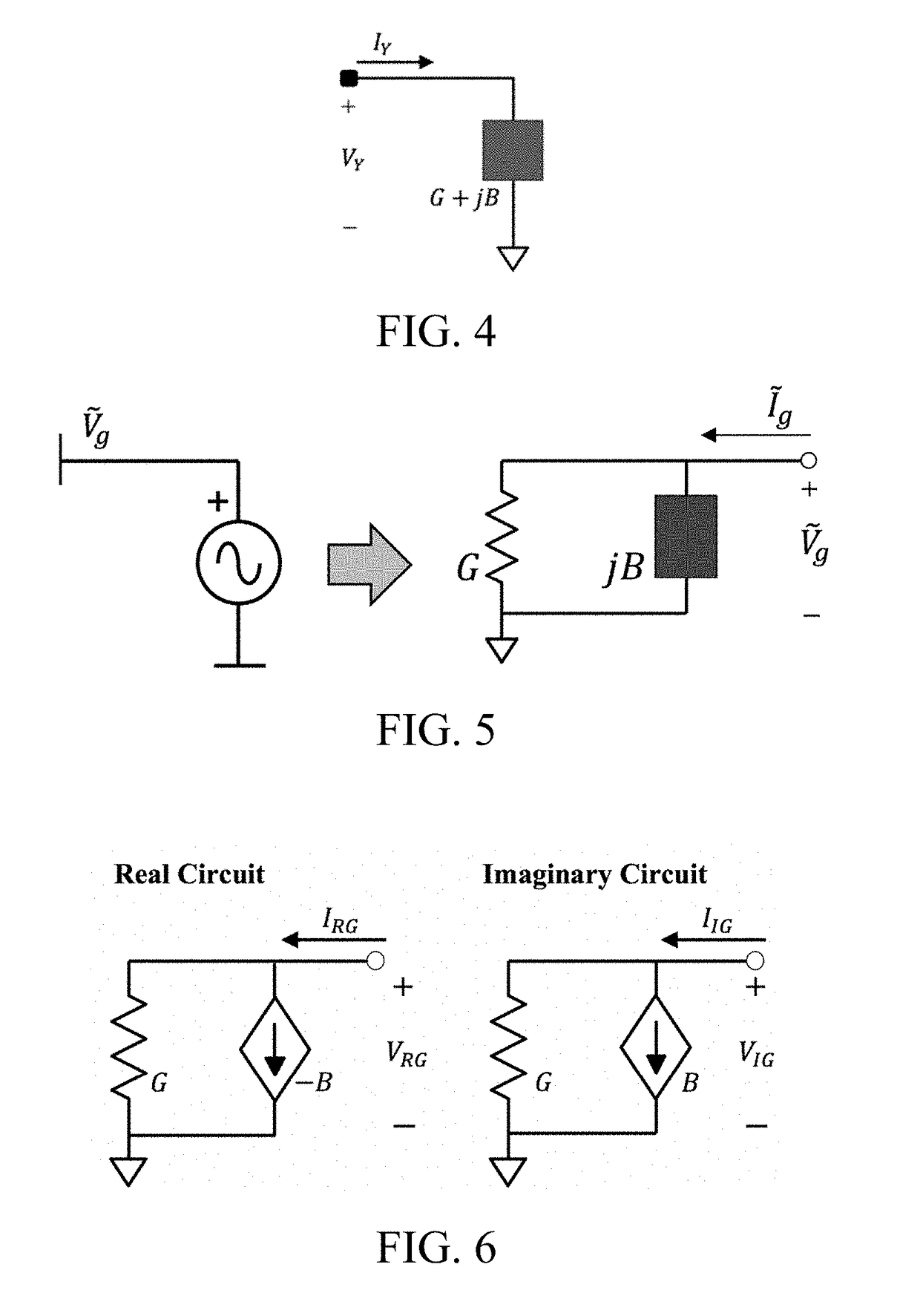Methods and Software for Calculating Optimal Power Flow in an Electrical Power Grid and Utilizations of Same
- Summary
- Abstract
- Description
- Claims
- Application Information
AI Technical Summary
Benefits of technology
Problems solved by technology
Method used
Image
Examples
example implementation
III. E Example Implementation of an OPF Solver in a Power Grid Network
[0166]FIG. 33 illustrates an example scenario 3300 in which an OPF solver 3304, made in accordance with aspects of the present invention, is used to solve for an OPF solution for a power supply system 3308 that includes a plurality of generators (shown collectively at element 3308A) and power grid equipment (shown collectively at element 3308B). Power supply system 3308 may be any relevant power supply system, such as a public utility grid, a private utility grid, a combination thereof, or a portion of any of these possibilities, among others. Depending on the character and nature of power supply system 3308, the power supply system may be controlled by one or more system operator 3312, such as a transmission system operator (TSO), an ISO, and / or a market dispatch, among others. Also depending on the character and nature of power supply system 3308, the power supply system may be monitored and / or regulated by one ...
PUM
 Login to view more
Login to view more Abstract
Description
Claims
Application Information
 Login to view more
Login to view more - R&D Engineer
- R&D Manager
- IP Professional
- Industry Leading Data Capabilities
- Powerful AI technology
- Patent DNA Extraction
Browse by: Latest US Patents, China's latest patents, Technical Efficacy Thesaurus, Application Domain, Technology Topic.
© 2024 PatSnap. All rights reserved.Legal|Privacy policy|Modern Slavery Act Transparency Statement|Sitemap



